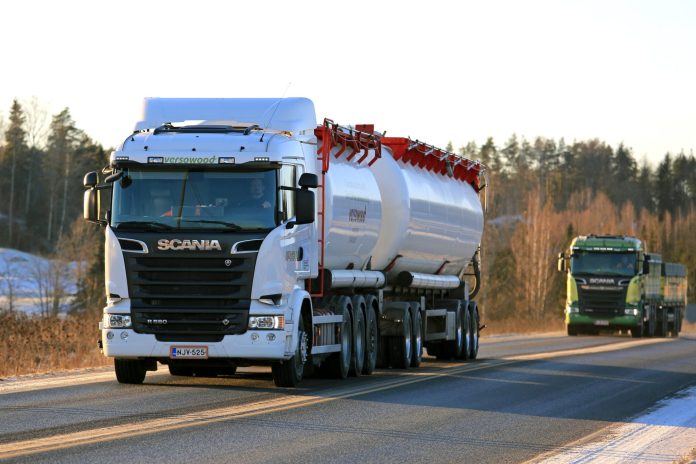EU co-funded ENSEMBLE project aims to introduce multi-brand platooning on European roads by 2021
German company ZF said it is currently working with truck manufacturers as part of the European Union’s co-funded ENSEMBLE project to test programs with the goal of introducing multi-brand platooning on European roads by 2021.
Since the project involves trucks from numerous manufacturers merging together to form a convoy, standards for networking are critical, the company said.
ZF’s current portfolio has the technology to enable platooning capabilities, including camera and radar sensors, the ZF ProAI supercomputer and the ReAx electrohydraulic commercial vehicle steering system as well as the transmission system.
“Driving functions like platooning are enabled by innovative ZF technology,” said Fredrik Staedtler, head of the commercial vehicle technology division at ZF. “We are already providing truck manufacturers with networking support that is making transport more efficient and positively impacting the total cost of ownership.”
ZF has tested the feasibility of platooning in several projects. As part of the EU ENSEMBLE project, the company has established the necessary standards to make multi-brand platooning possible. Multi-brand refers to convoys made up of trucks from different manufacturers. Such mixed convoys are likely to become the most frequent scenario for truck platooning, the company said.
In another project aFAS, which is sponsored by the German Federal Ministry for Economic Affairs, ZF has worked on implementing the platooning concept in security vehicles that are part of moving roadworks projects. ZF is currently testing platooning in Europe, but also has plans to advance the concept in North America in the coming years.
Truck platooning involves a number of trucks equipped with state-of-the-art driving support systems. The vehicles move in a group, or platoon, with the trucks driven by smart technology and communicating with one another.
Grouping vehicles into platoons is a method of increasing the capacity of roads. Platoons decrease the distances between cars or trucks using electronic, and possibly mechanical, coupling. This capability can allow many cars or trucks to accelerate or brake simultaneously. Vehicles can follow each other more closely than with human drivers, because less reaction distance is needed than human drivers require.
With the trucks braking immediately, with near-zero reaction time, platooning can also improve traffic safety. Platooning is also a cost-saver as the trucks drive close together at a constant speed. This means lower fuel consumption and fewer carbon dioxide emissions. According to European Truck Platooning, platooning efficiently boosts traffic flows thereby reducing tail-backs.
The impact of truck platooning goes far beyond the transport sector. Automated driving and smart mobility also offer realistic chances to optimize the labor market, logistics and industry, the European entity said.
Governments, entities and companies in the United States and Europe are already active in the truck platooning field.

